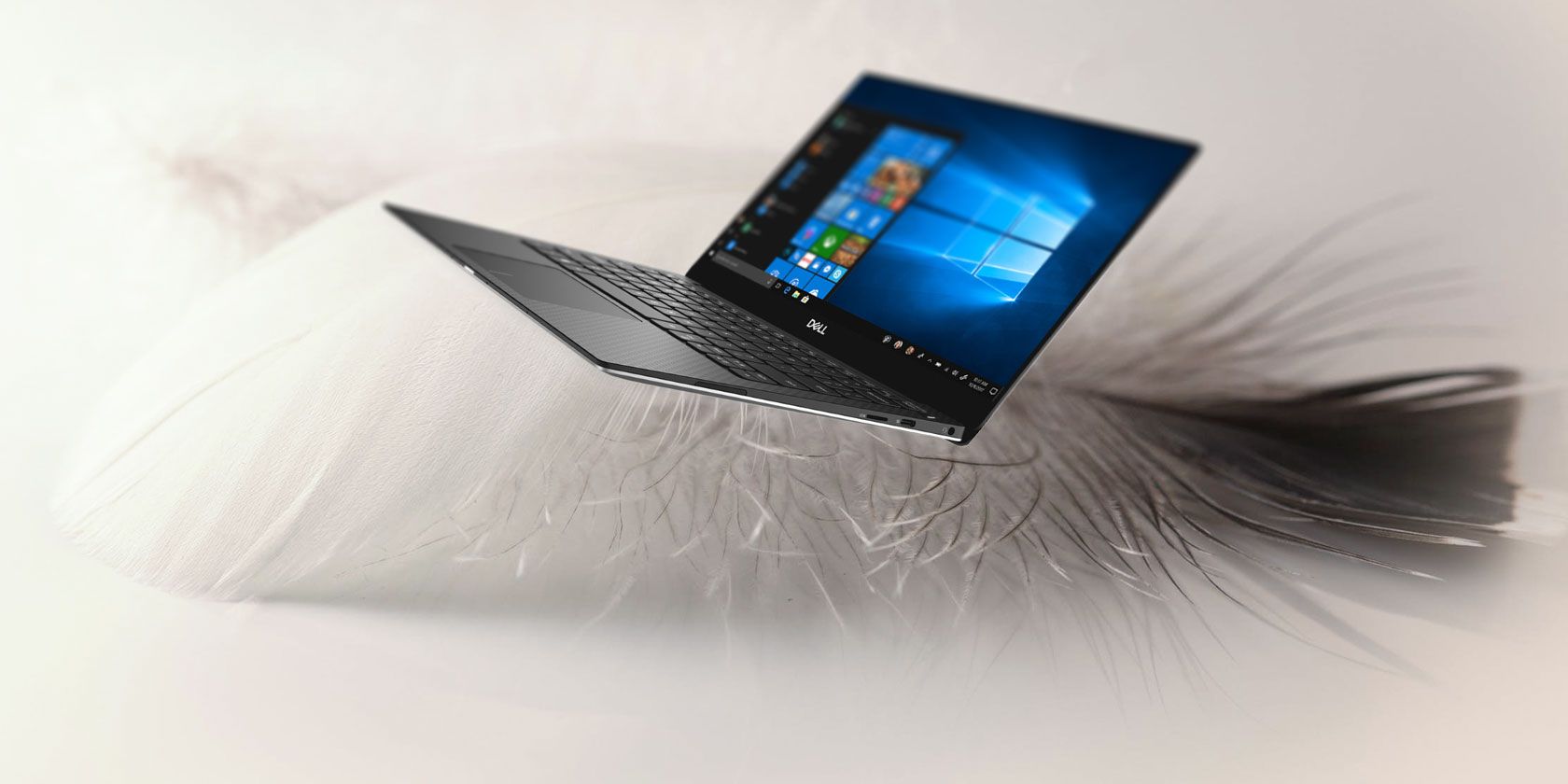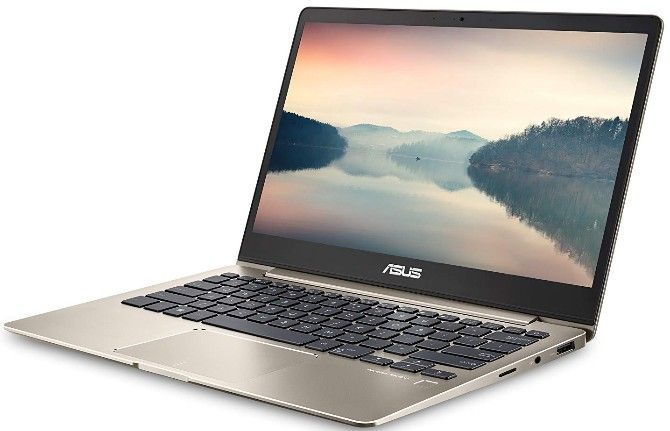An ultrabook is a type of a laptop computer that is thin and light, has an 11 to 15 inch screen, features a solid state drive (SSD), doesn't have a DVD drive, and boasts of a long battery life. Generally, an ultrabook costs a bit more than budget notebook computers.
For a good ultrabook in 2018 to run Windows, you shouldn't settle for anything less than an 8th generation Intel processor, also called Kaby Lake Refresh. This offers a tremendous boost over the old 7th generation Kaby Lake CPU, especially in the Core i5 series as they use four cores instead of two.
You should also not settle for an ultrabook with less than 8GB of RAM. Ultrabooks typically use integrated graphics, which share the system's memory. And Chrome isn't getting any lighter. Whether you know it or not, you need that RAM. Also, look for thin bezels for the screen. It shrinks the size of the laptop, which in turn makes it more lightweight.
Best Overall Ultrabook LaptopDell XPS 13 9360
- Operating System: Windows 10 Pro
- Processor: Intel Core i5 8250u
- Touchscreen: No
- Screen: 13.3 inch Full HD (1920x1080 pixels)
- Memory: 8GB RAM
- Storage: 128GB SSD
- Ports: 2xUSB 3.0, 1xThunderbolt 3 or USB-C, 1xSD card reader
- Notable Features: Ultra-portable, and incredible battery life
- Biggest Problem: The weird camera position
The Dell XPS 13 has been the top ultrabook, and the top Windows laptop, ever since it first launched (read our review). Every reviewer out there rates it as the best balanced Windows notebook you can buy today.
Dell has got everything right in the 2018 model and even included a fingerprint scanner under the power button. The two things that stand out are the screen and the battery life. On a single charge, you will be able to use the laptop for an impressive 12 hours. The XPS 13 has the thinnest bezels you will ever see on a laptop, which makes the 13.3-inch model compact. Plus the screen itself is bright and gorgeous, and you'll love watching movies on this.
The only issue with this is that the webcam has to be placed under the screen. It's a strange position, and you might feel the need to buy a separate webcam if you routinely do video calls.
The Dell XPS 13 is one device that is worth its price. No matter what you pick, you definitely aren't wasting money on this expensive laptop.
Note: There is a newer model, Dell XPS 13 9370, which is even thinner and offers a 4K touchscreen. However, to make it thinner, it has a smaller battery and no standard USB port. For most people, the XPS 13 9360 is our recommendation, not the XPS 13 9370.
Best Ultrabook Laptop Under $800Asus Zenbook 13 UX331
- Operating System: Windows 10 Pro
- Processor: Intel Core i5 8250u
- Touchscreen: No
- Screen: 13.3 inch Full HD (1920x1080 pixels)
- Memory: 8GB RAM
- Storage: 256GB SSD
- Ports: 2xUSB 3.0, 1xUSB-C, 1xMicro SD card reader
- Notable Features: Aluminum body
- Biggest Problem: Screen could be better
If the XPS 13's price tag is a bit too steep for you, then the best budget option is the Asus Zenbook UX331. The 2018 version of Asus's popular Zenbook series has much thinner bezels on the screen than its predecessors, which makes it more compact and lightweight. And Asus has also thrown in a backlit keyboard on this.
The Zenbook UX331 has a larger SSD (256GB) than the XPS 13 (128GB). But that's the only point where it gains on the Dell model. The visuals don't pop as much on the screen. The battery life is also lower, and the speakers are not as powerful as what you get with the XPS 13.
That said, the Zenbook UX331 is still better than any other ultrabook for less than $800. It gives you about 9 hours of battery life. There is a fingerprint sensor embedded in the trackpad.
When it comes to value for money, the Asus Zenbook UX331 is 10/10.
Note: For around $1,000, you can get the Asus Zenbook UX331UN instead. It comes with a discrete Nvidia GeForce MX150 graphics card instead of an integrated GPU. This is a better option if you plan to do any image editing or gaming, plus it has a touchscreen.
Best Cheap Ultrabook LaptopAcer Swift 3
- Operating System: Windows 10 Pro
- Processor: Intel Core i5 8250u
- Touchscreen: No
- Screen: 14 inch Full HD (1920x1080 pixels)
- Memory: 8GB RAM
- Storage: 256GB SSD
- Ports: 2xUSB 3.0, 1xUSB-C, 1xMicro SD card reader
- Notable Features: PCI-e SSD for fast data transfers
- Biggest Problem: Dim display is unpleasant
The cheapest ultrabook we can currently recommend as worth buying is the Acer Swift 3. It has the same processor as the Dell XPS 13 and the Asus Zenbook UX331N. But it also includes a 256GB PCI-e SSD.
When it comes to data transfer speeds on SSDs, PCI-e is significantly faster than SATA. When you transfer a big file between a USB drive and your laptop's drive, you'll see just how much faster the Swift 3 is.
That said, this is the only real advantage in the laptop. Acer has messed up the battery life on the Swift 3, with it clocking about 6-7 hours of regular usage. That's still very good for any laptop, but when you see what other ultrabooks offer, it seems low.
My biggest issue with the Acer Swift 3 is its screen. The display looks dim even at full brightness, which makes it unpleasant for things like watching movies or editing images.
If you were wondering how Acer managed a lower price even with the same specifications as other manufacturers, it's because they skimped on the screen quality and battery life.
Best Ultrabook Laptop for Business UsersLenovo ThinkPad X1 Carbon
- Operating System: Windows 10 Pro
- Processor: Intel Core i7 8650u
- Touchscreen: No
- Screen: 14 inch WQHD (2560x1440 pixels)
- Memory: 16GB RAM
- Storage: 512GB SSD
- Ports: 2xUSB 3.0, 2xThunderbolt 3.0 or USB-C, 1xHDMI
- Notable Features: Shutter for webcam, connectivity ports
- Biggest Problem: Random trackpad freezes and delays
Ask any company's IT administrator about their preferred machines to work on, and they will usually answer that it's the Lenovo ThinkPad series. The company has carved a niche for itself in the world of business users, which makes this the best ultrabook for professionals.
The ThinkPad X1 Carbon's main business features are too IT-centric for you to bother about, including autolocking systems and fingerprint scanners. But you can still see some of the cool things that the ThinkPad X1 Carbon brings, like its new ThinkShutter, which is a small shutter on the camera to protect you from webcam hacks.
Lenovo also knows how important connectivity ports are for a business user. When you need to make a presentation, you should be thinking about the presentation, not about how to hook up an HDMI cable to a USB-C port. That's why it's particularly impressive that the ThinkPad X1 Carbon has an HDMI port even in the thin profile of an ultrabook.
There are no noticeable problems with the ThinkPad X1 Carbon. A long-term review by Windows Central found that the trackpad has a few bugs, where it randomly freezes or registers input after a delay. It's not a deal-breaker though.
Note for buyers: The recommended configuration here is one of the best you can get with a ThinkPad X1 Carbon, but it might be overkill for some people. Most people don't need a Core i7 processor, or 16GB of RAM for that matter. Check Lenovo's site for more configuration options.
Best Ultrabook Laptop for GamingMSI GS65 Stealth Thin
- Operating System: Windows 10 Pro
- Processor: Intel Core i7 8750H
- Touchscreen: No
- Screen: 15.6 inch Full HD (1920x1080 pixels)
- Memory: 16GB RAM
- Storage: 256GB SSD
- Ports: 3xUSB 3.0, 1xThunderbolt 3.0 or USB-C, 1xHDMI, 1xMini DisplayPort, 1xEthernet
- Notable Features: Fantastic screen and speakers, discrete graphics card
- Biggest Problem: Heats up a lot while gaming, no 4K screen
The Razer Blade is the ultimate gaming ultrabook, and it has an ultimate price tag too. For a more balanced option that gives you the same great hardware without breaking the bank, go for the MSI GS65 Stealth Thin.
Despite its thin size and light weight, MSI has crammed some impressive hardware into this. The graphics card is an Nvidia GeForce 1060, which will handle any new PC game and even let you play virtual reality games. You can even upgrade it to a GeForce 1070.
On an average, you will get about 8 hours of usage on a single charge with the MSI GS65 Stealth Thin. That's all right for an ultrabook but really impressive for a gaming laptop.
What you'll appreciate most is the gaming experience. You get a large 15-inch screen for your gaming, but because of its thin bezels, the ultrabook is still compact. It's a fantastic screen with 144Hz refresh rate and a vivid IPS panel. The only thing you'll miss is that it does not support 4K resolution, but you probably won't mind.
The thin size had to have a compromise somewhere though, and that comes in the form of heat dissipation. MSI hasn't cracked the formula for how to keep the GS65 Stealth Thin cool while you play games, so the laptop tends to heat up. It's best to put it on a desk when you play games, not on your lap.
How About a 2-in-1 Ultrabook Laptop?
One of these ultrabooks should fit your budget and requirements perfectly. For most people, the Dell XPS 13 should be the perfect laptop that you can buy right now and don't think about upgrading or changing for a few years.
The only factor lacking in these choices is a laptop whose screen detaches into a tablet. That's because those are technically not ultrabooks and get their own category. But if that's what you want instead of an ultrabook, check out our picks for the best 2-in-1 hybrid or mini tablet PC.


